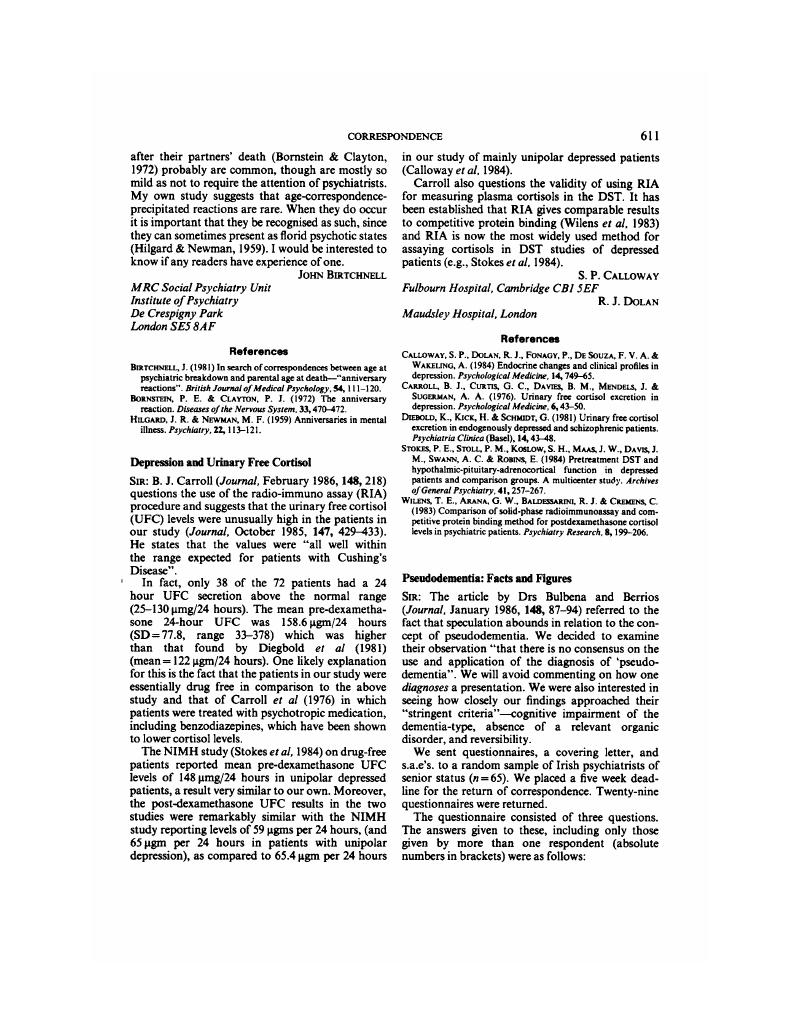No CrossRef data available.
Article contents
Depression and Urinary Free Cortisol
Published online by Cambridge University Press: 29 January 2018
Abstract
An abstract is not available for this content so a preview has been provided. As you have access to this content, a full PDF is available via the ‘Save PDF’ action button.

- Type
- Correspondence
- Information
- Copyright
- Copyright © 1986 The Royal College of Psychiatrists
References
Calloway, S. P., Dolan, R. J., Fonagy, P., De Souza, F. V. A. & Wakeling, A. (1984) Endocrine changes and clinical profiles in depression. Psychological Medicine, 14, 749–65.Google Scholar
Carroll, B. J., Curtis, G. C., Davies, B. M., Mendels, J. & Sugerman, A. A. (1976). Urinary free Cortisol excretion in depression. Psychological Medicine, 6, 43–50.Google Scholar
Diebold, K., Kick, H. & Schmidt, G. (1981) Urinary free Cortisol excretion in endogenously depressed and schizophrenic patients. Psychiatria Clinica (Basel), 14, 43–48.Google Scholar
Stokes, P. E., Stoll, P. M., Koslow, S. H., Maas, J. W., Davis, J. M., Swann, A. C. & Robins, E. (1984) Pretreatment DST and hypothalmic-pituitary-adrenocortical function in depressed patients and comparison groups. a multicenter study. Archives of General Psychiatry, 41, 257–267.CrossRefGoogle Scholar
Wilens, T. E., Arana, G. W., Baldessarini, R. J. & Cremens, C. (1983) Comparison of solid-phase radioimmunoassay and competitive protein binding method for postdexamethasone Cortisol levels in psychiatric patients. Psychiatry Research, 8, 199–206.Google Scholar



eLetters
No eLetters have been published for this article.